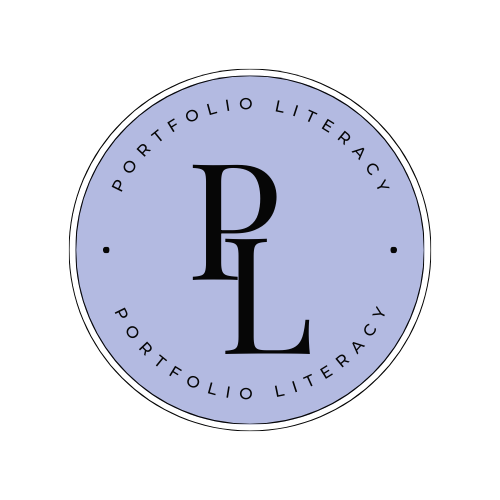Building a 3-fund dividend portfolio offers a straightforward path to generating dividend income while maintaining simplicity in your investment strategy. By carefully selecting three complementary funds, you can create a balanced approach that provides regular dividend payments without requiring constant portfolio adjustments. Creating a successful 3-fund dividend portfolio requires focusing on total return potential rather than just high dividend yields, as the most effective portfolios balance income generation with long-term growth.
A well-structured 3-fund dividend portfolio typically combines broad market exposure with income-generating assets to provide both stability and growth potential. The beauty of this approach is its simplicity—by limiting yourself to just three funds, you reduce complexity while still capturing the essential elements needed for a resilient investment strategy.
Key Takeaways
- Focus on total return rather than dividend yield alone when selecting your three funds for long-term portfolio success.
- Adjust your allocation percentages based on your age and risk tolerance for optimal performance during different life stages.
Understanding Dividend Investing
Dividend investing offers a pathway to build steady income while potentially growing your wealth over time. It requires understanding several key concepts to make informed decisions that align with your financial goals.
The Role of Dividends in Portfolio Growth
Dividends play a crucial part in long-term investment success. When companies distribute a portion of their profits to shareholders, you receive cash payments that can be reinvested to purchase additional shares.
This reinvestment creates a powerful compounding effect. Over time, your dividend income can grow not only from potential increases in dividend yields but also from owning more shares that generate their own dividends.
In a three-fund portfolio, dividends can provide stability during market volatility. They deliver tangible cash flows regardless of stock price fluctuations, acting as a buffer during downturns.
Companies with consistent dividend payments often demonstrate financial discipline and strong business fundamentals. These payments signal management’s confidence in future cash flows and commitment to shareholder value.
Evaluating Dividend-Paying Stocks
When assessing dividend funds, look beyond high yields. Examine the underlying company’s payout ratio (dividends paid divided by earnings), which indicates sustainability. Lower ratios (typically 30-60%) suggest room for dividend growth.
Check the company’s track record of payments. Firms with histories of maintaining or increasing dividends through economic cycles demonstrate reliability. Many investors value “Dividend Aristocrats” – companies that have increased dividends for 25+ consecutive years.
Analyze growth prospects and financial health. Strong balance sheets, manageable debt levels, and consistent cash flows support long-term dividend sustainability.
Consider industry position and competitive advantages. Companies with durable market positions can better maintain dividends when facing industry pressures or economic downturns.
Dividend Yield vs Total Return
Dividend yield represents annual dividend payments as a percentage of share price. While above-average dividend yields may seem attractive, they sometimes indicate underlying problems if caused by falling share prices.
Total return provides a more comprehensive measure of investment performance by combining dividend income with capital appreciation. As noted in Bogleheads discussions, focusing solely on dividends might lead to overlooking better-performing investments with lower yields but higher growth potential.
A balanced approach considers both components. Some investors add specific dividend funds to their portfolios to increase income while maintaining growth exposure.
Different life stages may warrant different allocations and strategies. During accumulation phases, total return often takes priority, while income generation and income stability becomes more important in retirement.
Designing Your 3-Fund Dividend Portfolio
Creating an effective 3-fund dividend portfolio requires careful selection of complementary funds that align with your financial goals and risk tolerance. The right combination can generate consistent dividends while maintaining growth potential over time.
Choosing the Right Funds
When constructing a 3-fund dividend portfolio, you need to select funds that complement each other while providing reliable income. Piggybacking off the Boglehead 3-fund portfolio, their typical structure includes a total US stock market fund, an international stock fund, and a bond fund. You may choose to replace the bond fund with a dividend fund or a fund that will be more aggressive or defensive for your risk tolerance, but the total market approach diversifies your risk significantly more than picking individual securities.
For the US equity component, common considerations are broad-based index funds like Vanguard Total Stock Market ETF (VTI) or Schwab US Dividend Equity ETF (SCHD). These provide exposure to domestic companies with strong dividend histories.
Your international fund should capture global dividend opportunities outside the US. Options include Vanguard International High Dividend Yield ETF (VYMI) or iShares International Select Dividend ETF (IDV).
For the third fund in your dividend portfolio, I recommend a target date fund for a better retirement glide path, or you may choose a sector focused fund to provide more concentration for aggressive investors.

Allocating Assets to Balance Risk and Return
Your asset allocation determines your portfolio’s behavior during different market conditions. A common starting point is the age-based rule: subtract your age from 110 to determine your stock percentage, with the remainder in bonds.
For a dividend-focused approach, you might adjust this formula to favor income-producing assets based on your needs. Younger investors can typically allocate 70-80% to stock funds (split between US and international) and 20-30% to bonds (or more income focused assets). Retirees seeking income might prefer a 50-60% allocation to dividend stocks with the remainder in bonds.
Focus on total growth rather than the source of that growth (appreciation or dividends). This balanced perspective helps you make objective allocation decisions.
Review your allocation annually and rebalance when your targets drift by 5% or more. This disciplined approach maintains your risk level and can protect your rate of return with continuous buying of assets, reinvesting your dividends.
The Significance of Diversification
Diversification serves as your portfolio’s primary defense against market volatility. The 3-fund portfolio approach provides excellent diversification across thousands of securities with minimal effort.
By holding US stocks, international stocks, and your aggressive/defensive defining third fund, you protect against concentrated risks in any single market. When one sector struggles, others may compensate, smoothing your overall returns and dividend income.
International diversification is particularly important for investors. Many foreign markets offer higher dividend yields than US companies, enhancing your income potential. Not to mention if one country performs poorly other countries may offset their performance.
Don’t mistake complexity for diversification. Adding more funds doesn’t necessarily improve your portfolio if they contain similar holdings. The elegance of the 3-fund approach is its simplicity coupled with comprehensive market coverage.
Maximizing Income and Stability
Building a portfolio that delivers consistent income requires strategic balance between high-yield opportunities and capital preservation. Dividend growth and stability form the cornerstone of a sustainable income strategy that can weather market fluctuations while providing increasing returns over time.
Managing Volatility for Long-Term Success
Market volatility can significantly impact dividend portfolios, but proper management strategies can maintain steady income even during turbulent periods. You should diversify across multiple sectors to control concentration risk, as different industries respond differently to economic cycles.
When building your 3-fund dividend portfolio, include underlying companies with strong financial stability rather than focusing solely on growth potential. Financially stable companies tend to maintain dividend payments even during downturns.
Consider these strategies for volatility management:
- Allocate investments across various market caps (large, mid, small)
- Include companies with long dividend payment histories
- Implement dollar-cost averaging during market fluctuations (DRIP helps with this)
- Set appropriate expectations for short-term volatility while focusing on long-term results
Rebalancing annually helps maintain your target allocation and reduces risk exposure over time.
Reducing Risk Long Term
I mentioned using a target date fund as the third fund, as they are rebalanced as the target date approaches. Their glidepath will include a greater allocation to bonds when approaching that target date, leading to a greater emphasis on capital preservation as you near retirement. As you mature you may plan to allocate more to this third fund or add a bond fund while divesting from your former dividend funds.
Your bond fund selection should balance:
- Duration: Shorter-term bonds reduce interest rate sensitivity
- Credit quality: Higher-quality bonds provide better stability
- Yield considerations: Finding appropriate risk/reward balance
During significant market downturns, bonds often move inversely to stocks (but not always, for example: 2022), helping to cushion portfolio declines and preserve your capital base.
Smart adjustments to your 3-fund dividend portfolio can help you navigate your financial goals as a dividend investor. Growing your portfolio through continuous reinvesting and contributions while maintaining diversification will lead to balanced growth for both your portfolio and your dividend income.
Disclaimer:
This post contains mentions of publicly traded securities. This post is not a recommendation to buy, sell, or trade said securities. Please visit my personal portfolio to see my financial positions for clarity of my biases or inclinations.
